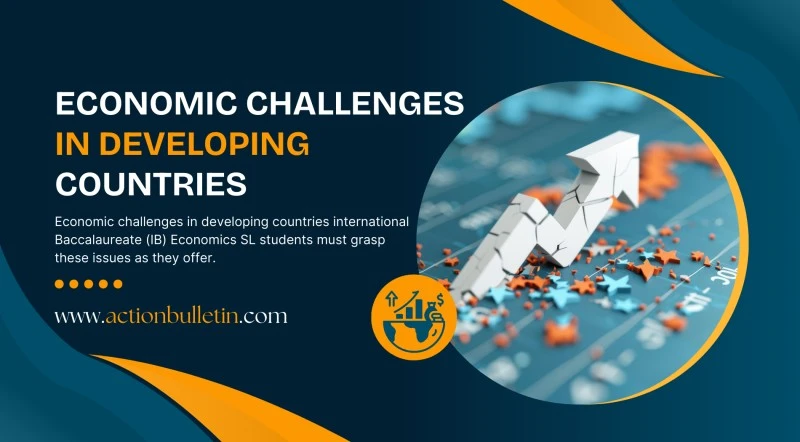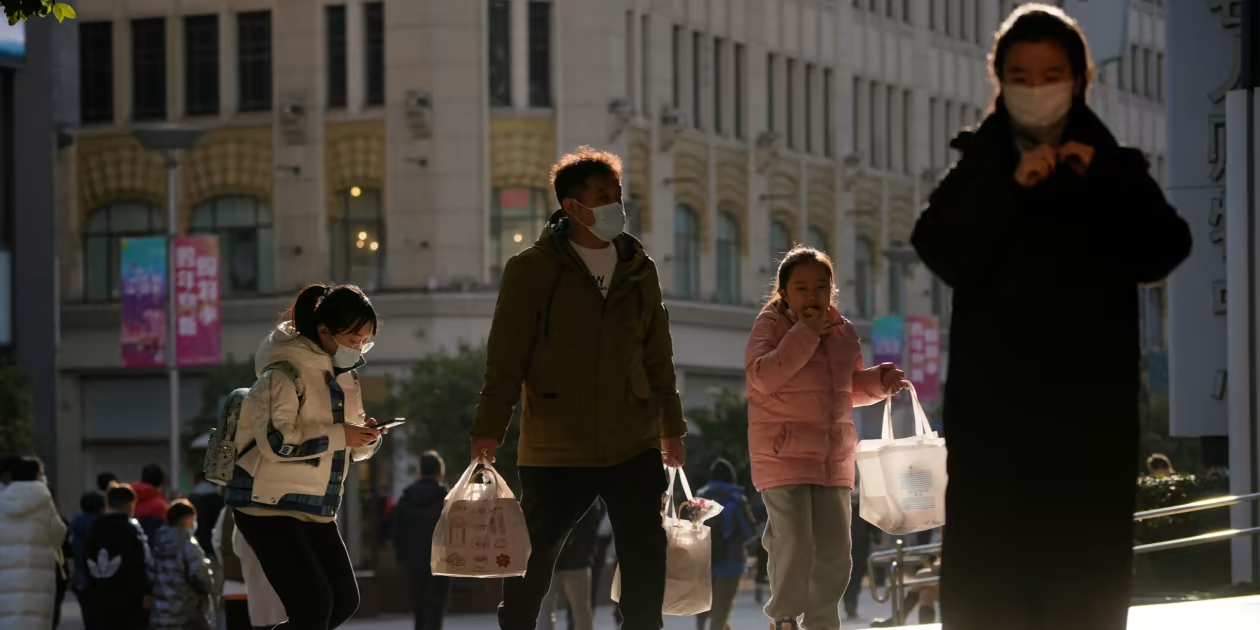Structural challenges in poor countries include the basic problems impeding sustainable economic development and growth. Economic challenges in developing countries international Baccalaureate (IB) Economics SL students must grasp these issues as they offer knowledge of what is keeping countries from gaining greater living standards and economic stability. In keeping with the IB program's curricular goals, this paper explores the many structural barriers, their implications, and possible remedies.
Economic Challenges In Developing Countries
1. Lack of Infrastructure
Any economy's backbone is infrastructure, which supports the effective transportation of goods and services and hence economic activity. Lack of infrastructure—such as not enough transportation systems, erratic power supply, and restricted access to clean water—seriously hinders economic development in developing nations. Inadequate road networks, for example, might raise transportation expenses, limit rural producers' market access, and discourage foreign investment. Unreliable power also interferes with industrial output and prevents the setting up of manufacturing units; hence, it restricts employment development and economic diversity.
Read also: The Best Economic System in the World
2. Lack of education.
Economic growth depends on a well-educated labor force, as it improves production and drives creativity. Limited resources, poor teacher preparation, and inadequate educational infrastructure make it difficult for developing nations to offer excellent education. These deficiencies create a skills mismatch in which the laborer may lack the requisite abilities for the labor market. Such an imbalance thereby reduces the capacity of economies to advance up the value chain and compete in more skilled sectors. A lack of technical education, for instance, might impede the expansion of the technology sector, which is essential for contemporary economic development.
3. Weaknesses of Institutions
Maintaining property rights, enforcing contracts, and guaranteeing political stability all depend on strong institutions. In many developing countries, institutional shortcomings show up as corruption, bureaucratic inefficiency, and political unrest. Corruption erodes confidence in governmental institutions, disheartens investment, and redirects resources away from vital public services. While political instability creates an uncertain climate that discourages both domestic and foreign investors, bureaucratic inefficiencies can cause project execution delays and higher expenses. These elements together create an erratic and negative corporate environment that impedes economic development.
4. Restricted Capital Access
Investment and economic growth depend on access to capital, which is very necessary. Many developing nations lack sufficient access to both local and international finance markets. High interest rates, weak financial institutions, and poor financial infrastructure might limit the availability of loans to companies and entrepreneurs. A scarcity of money restricts companies' capacity to invest in new technology, scale operations, and create ideas, thereby impeding economic development. Limited access to money can also keep poverty going by stopping people from launching small enterprises and pursuing education.
Read also: Unveiling the Different Economies of the World
5. Lag in Technology
Productivity and economic development are mostly driven by technological progress. Insufficient investment in research and development (R&D), low acceptance of current technology, and poor infrastructure to enable technological distribution sometimes cause developing economies to lag behind. This delay limits these countries' capacity to raise output, broaden their sectors, and compete on the world stage. For instance, the low utilization of information and communication technology (ICT) might hinder corporate efficiency and lower their competitiveness in the digital economy.
6. Health Issues
Public health concerns significantly influence economic growth. High rates of sickness, poor healthcare systems, and restricted access to medical services lower worker output and raise economic strain on families and governments. Health issues can cause a greater dependence ratio, in which fewer working-age people support more dependents, thereby depleting public resources. Regular health problems can also interfere with economic activity, discourage investment, and lower general economic resilience. For example, epidemics of illnesses like malaria or HIV/AIDS can greatly decrease the workforce and impede economic performance.
7. Reliance on Primary Sectors
Many developing countries depend mostly on basic industries, including mining, agriculture, and natural resource exploitation. Their economies are susceptible to changes in world commodity pricing and natural resource depletion because of this reliance. Excessive reliance on basic industries usually leads to low industrial diversity, which might impede economic development and heighten sensitivity to outside shocks. Furthermore, primary sectors usually pay less and are less productive than secondary and tertiary industries, which might contribute to low-income levels and impede general economic progress.
8. Unequal Income Distribution
Unfair income distribution can aggravate social conflicts and impede economic development. In emerging countries, notable wealth differences can result in social instability, lower consumer spending, and limited access to education and healthcare for the lower-income population. These inequalities might lead to a cycle of poverty in which people are unable to take advantage of possibilities that can raise their financial situation because of their lack of money. Moreover, unequal distribution might decrease the total market size and impair the capacity of the economy to provide enough total demand for continuous expansion.
9. Environmental Damage
The decline of the environment presents major obstacles to sustained economic growth. Pollution, unsustainable farming methods, and deforestation may all contribute to the loss of natural resources and negative impact on human health. These environmental problems can lower agricultural production, raise medical expenses, and make a nation less appealing for investment. Furthermore, the effects of climate change, like severe weather, can interfere with economic activity, harm infrastructure, and relocate people, impeding economic expansion and development even more.
Read also: What type of economic system is Japan?
10. Trade Barriers and Protectionism
Trade obstacles, including tariffs, quotas, and non-tariff barriers, can hinder market access for developing countries, impede export expansion, and lower economic efficiency. While they could provoke retaliation from trade partners and lower general trade volumes, protectionist measures could be used to protect domestic businesses from international competition. Restricted access to world markets limits the possibilities for countries to gain from technical transfers, economies of scale, and comparative advantage. Isolation can hinder creativity, lower competitiveness, and delay economic expansion.
Conclusion on Economic Challenges In Developing Countries
Ultimately, poor nations struggle with a tangled mix of financial issues that impede their way toward sustainable development and prosperity. Problems including poverty, high unemployment rates, lack of infrastructure, corruption, and restricted access to good education and healthcare keep their economies under great strain. External elements, including global market volatility, climate change, and debt loads, further add complexity to their development initiatives.
Overcoming these obstacles calls for a multifaceted strategy comprising good governance, human capital investment, careful use of foreign aid, and inclusive economic policy. Developing countries may slowly create strong economies that provide more possibilities and better quality of life for their people by tackling the underlying reasons and carrying out long-term reforms. In the end, helping these nations on their road to economic stability and progress depends on worldwide collaboration and dedication to fair growth.
FAQs: Economic Challenges in Developing Countries
What are the economic problems of developing countries?
Economic issues like child labor, creditworthiness, corruption, and poverty and its staying events are especially sensitive for developing nations with small economies or economies in transition.
What are the major challenges faced by today's developing countries?
Shocks and stresses include climate change, events, violent extremism, war, economic and financial instability, diseases, food poverty, and pollution that disproportionately affect some nations.
What are the challenges facing economic integration in developing countries?
Lack of strong political support and dedication to the process, frequent conflicts and political instability, poorly planned regional integration efforts, too many different programs, insufficient funding, and not involving important stakeholders in the regional integration process are all seen as contributing factors.
What are the economic obstacles in the economic development of underdeveloped countries?
The following are significant social and political obstacles: corrupt and inefficient governments, large and growing populations, and gender inequality. A lack of capital investment, an overwhelming level of debt, poor terms of trade, and inadequate technology are among the economic and financial obstacles.



.webp)


